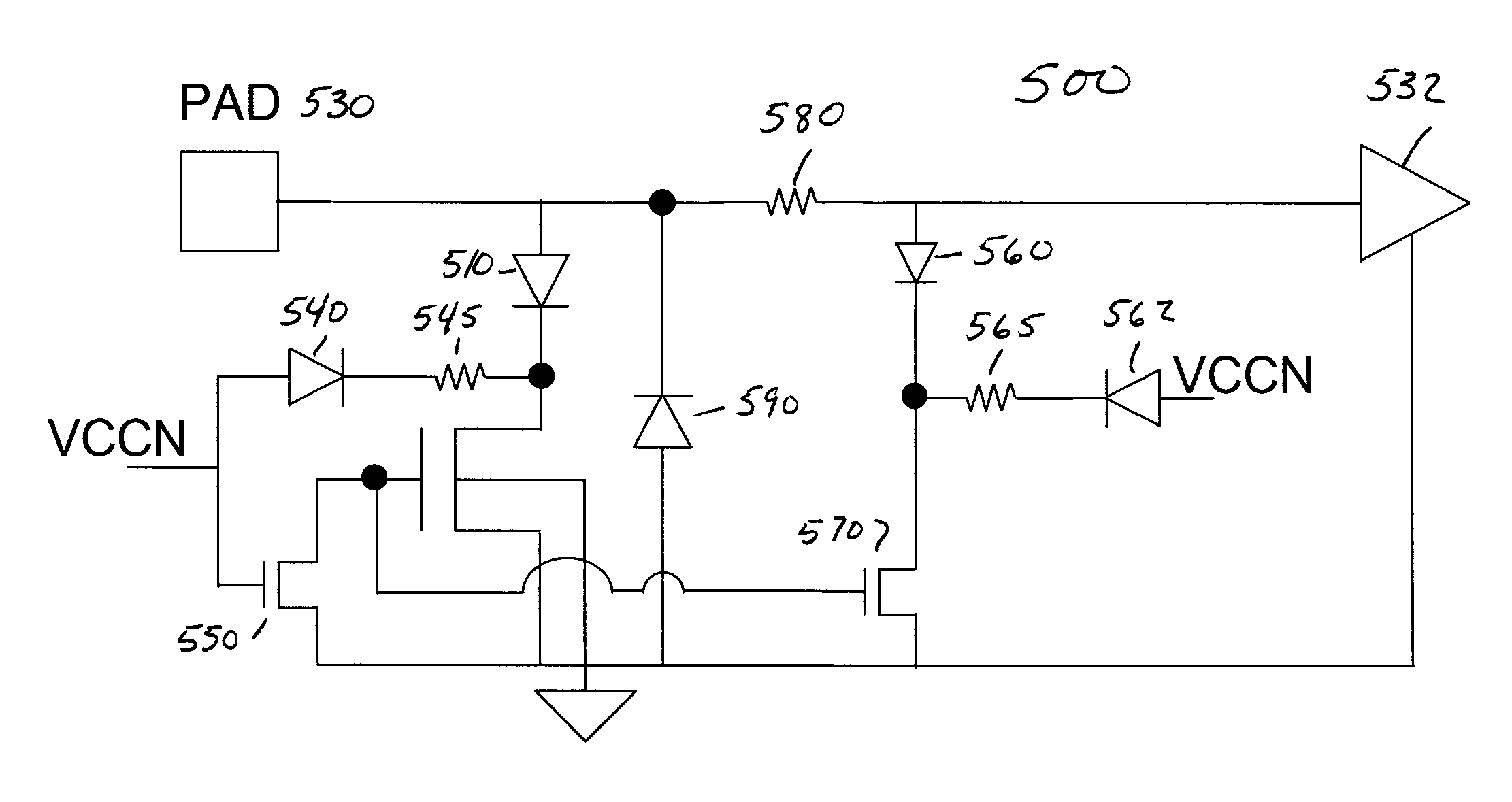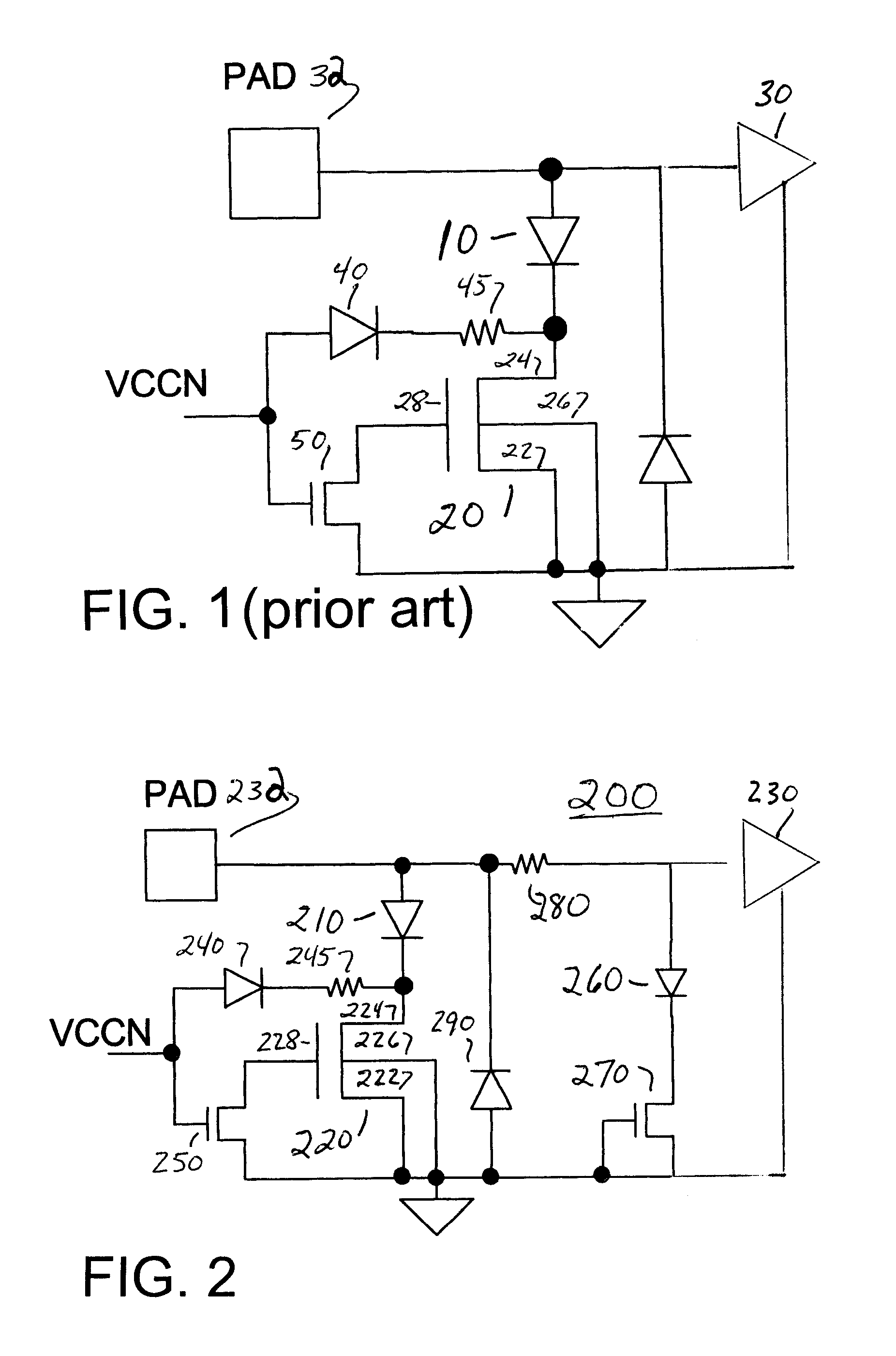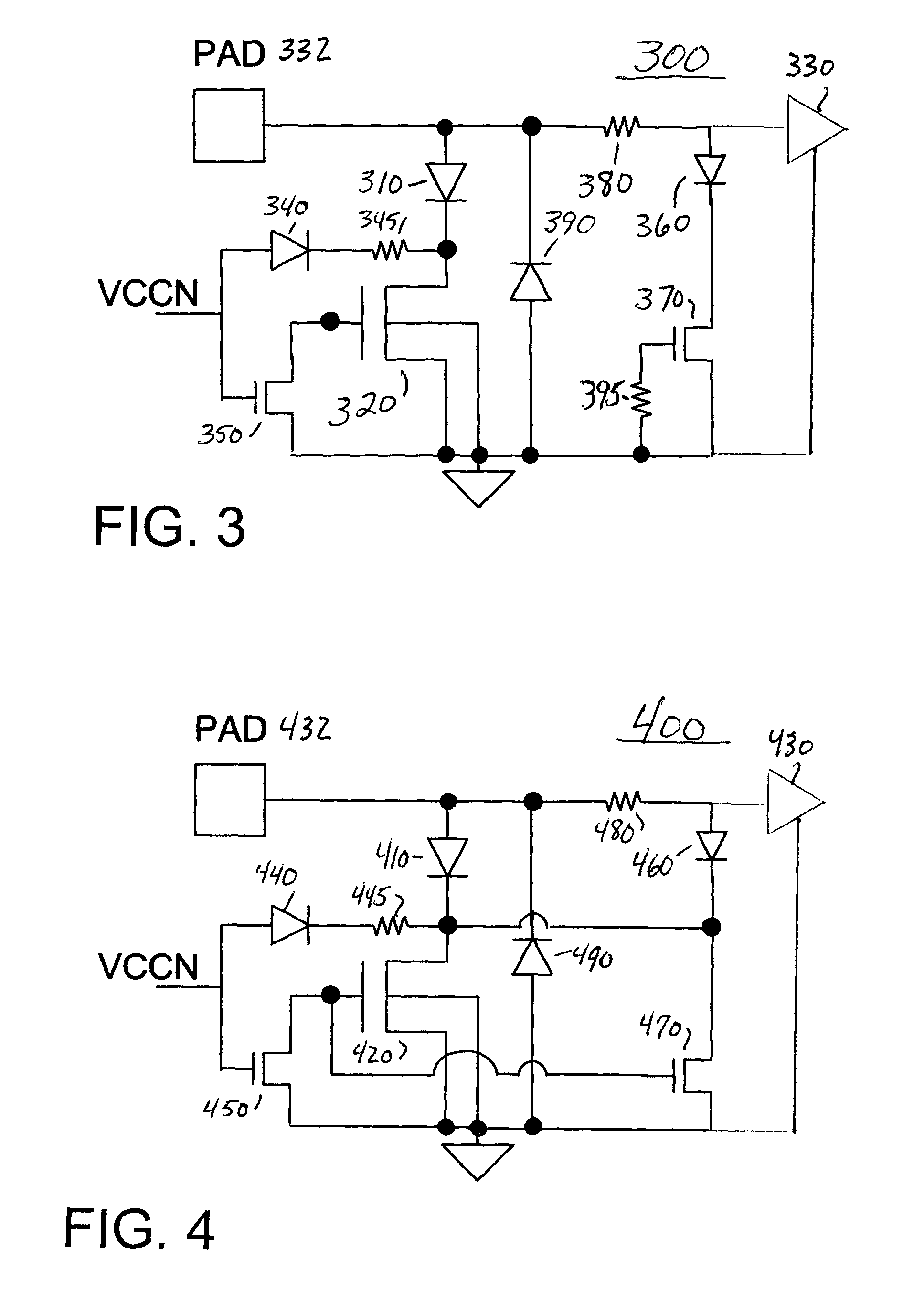CDM performance of high speed CLK inputs
a high-speed clk input and cdm technology, applied in emergency protective arrangements, emergency protective arrangements, electrical equipment, etc., can solve the problems of limiting the input bandwidth, the survivability of this oxide to esd events in 65 nm technologies and beyond, and the increase of the capacitive loading on the pad, so as to reduce the capacitance
- Summary
- Abstract
- Description
- Claims
- Application Information
AI Technical Summary
Benefits of technology
Problems solved by technology
Method used
Image
Examples
Embodiment Construction
[0012]FIG. 2 is a schematic diagram of an illustrative embodiment of an ESD circuit 200 of the present invention. Circuit 200 comprises an input buffer 230 connected to a pad or node 232, a diode 210 and main clamp 220 connected between pad or node 232 and ground, and a diode 260, secondary clamp 270 and isolation resistance 280 connected in series between the pad and ground. Main clamp 220 is an MOS transistor comprising a source 222, a drain 224, a body 226 and a gate 228. Source 222 and body 226 are connected to ground; and drain 224 is connected to the cathode of diode 210. The anode of diode 210 is connected to pad 232. Preferably, the drain of the main clamp is pulled to Vcc by diode 240 and resistor 245 to avoid forward biasing diode 210; and gate 228 of the main clamp is soft grounded through a transistor 250 to facilitate bipolar triggering. Preferably another diode 290 is connected between pad 232 and ground with its cathode connected to pad 232 and its anode to ground so ...
PUM
 Login to View More
Login to View More Abstract
Description
Claims
Application Information
 Login to View More
Login to View More - R&D
- Intellectual Property
- Life Sciences
- Materials
- Tech Scout
- Unparalleled Data Quality
- Higher Quality Content
- 60% Fewer Hallucinations
Browse by: Latest US Patents, China's latest patents, Technical Efficacy Thesaurus, Application Domain, Technology Topic, Popular Technical Reports.
© 2025 PatSnap. All rights reserved.Legal|Privacy policy|Modern Slavery Act Transparency Statement|Sitemap|About US| Contact US: help@patsnap.com



